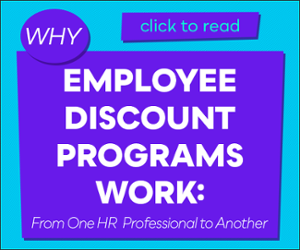 Earlier this week the Salt Lake Valley was slammed with a massive snowstorm, making a commute to the Access offices impossible for many of our employees. It wasn’t a big deal, as we already have many employees with flexible arrangements.
Earlier this week the Salt Lake Valley was slammed with a massive snowstorm, making a commute to the Access offices impossible for many of our employees. It wasn’t a big deal, as we already have many employees with flexible arrangements.
I was one of those who worked from home. Over the course of the day, two observations about working from home stood out to me:
- It’s impossible to feel like a serious, productive contributor when wearing pajama pants
- Face-to-face interaction with colleagues is far more important than I realized
The first is fairly self-explanatory, even if exclusive to myself. I spent the morning dressed as if I were going to head to work at any moment, and I felt like I was at work. After a second round of driveway shoveling, I switched to pajama pants.
No matter what I was working on, my mindset in pajama pants just felt as if the lovable but ultimately useless stoner roommate in a Judd Apatow movie (played by Seth Rogen, probably).
The second observation was a bit of a revelation.
I already knew that one quick personal conversation, even by phone, could replace dozens of emails. What I hadn’t realized was the feelings of inclusion and collaboration that I get by being in a brick-and-mortar office each day. I needed to be in the midst of my coworkers, bouncing ideas off them, hearing the urgency in their voices as they waited for projects from me, and hearing them work out their own assignments.
Alone, I just couldn’t feel the buzz and momentum that comes with close proximity to colleagues. I was productive enough for that one day, but surely ready to get back into the office.
As we continue to dive into the close ties between employee engagement and customer engagement, and the major role played by Millennials in that equation, the topic of flexibility is one that every company will have to address.
Millennials are overwhelmingly desirous of flexible arrangements, and older generations are following their lead. Web- and mobile-based technology makes working outside the traditional office easy, and some businesses can save significant amounts of money on overhead. The environment is right for a shift in where and when people work.
But, as with many changes Millennials are ushering into the modern workplace, there is a need for moderation and smart management. It’s important that everyone is aware of the potential hazards of flexible working arrangements, and puts in place policies and measures to ensure those hazards go unrealized.
The Risks of Flexibility
The first threat many managers see with offsite workers is productivity. According to one study, 75% of managers say they trust employees, but 33% want to be able to see them, "just to be sure." You don’t have to be that manager. As long as productivity expectations and deadlines are made clear, assume people will get done what they need to get done.
While productivity is a legitimate concern, it’s not the biggest challenge.
That would be isolation. Telecommuting and off-hours working have an inherent lack of personal interaction, harming natural cohesion and collaboration. The less people interact with the “company,” the less likely they are to be engaged in its values and goals.
Conversely, face-to-face interactions build trust, transparency, empathy, and collaboration (which is also a major interest for Millennial employees).
On a related note, communication can be a challenge as well, as many employees are content to rely on emails and texts while out of the office (41% of Millennials prefer to communicate electronically, even when in an office). And as well know, tone isn’t always obvious in the written form.
Another major risk? Burnout. When the home becomes the workplace, and 8-5 is replaced by 24/7, work can become very burdensome, very quickly. 70% of Millennials report putting in 20+ hours outside the office each week, but data indicates that the further past 40 hours employees put in, the less effective they become.
Personal Management, Personal Policies
Don’t let us put a damper on the flexible movement. Access has adopted flexible policies, as should every workplace. But maintaining engagement is a challenge that requires smart management and policies, along with an undying commitment to personal touches.
- Set expectations - Be sure everyone is on the same page as to expectations and deadlines. Whether they’re putting in work at midnight or 8-5, productivity boils down to tasks completed and on time. The manager’s job is to make sure those expectations are clearly communicated and understood.
- Maintain consistent face to face contact - As mentioned above, isolation is the most deadly ground for remote or off-schedule employees. Set regular personal meetings, even if they have to be done over Skype. Do this between manager and individual employee, but also set a time when the entire team is together, in order to continue building that cohesion and empathy.
- Create cross-functional teams - Similarly, plug employees into teams with others from different departments. Besides the benefits of personal collaboration, this will encourage employees to earn more insight as to how each unit of the company serves the higher goals. Even if you don’t have remote employees, this is a great way to earn more engagement.
- Know when to pick up the phone - Don’t rely on emails or texts solely. When tone needs to be conveyed, pick up the phone. As mentioned above, one quick phone call can save you dozens of emails.
Mixing Old School and New School
A brick-and-mortar office with an 8-5 schedule is surely “old school,” and such a setup isn’t necessary for success in this advanced technology age. But there are elements that the arrangement provides that are very important - cohesion and empathy via proximity, ease of communicating difficult topics, exposure to other departments and how they fit into the overall vision of the company, to name a few. In this setup, flexibility is a very nice employee benefit.
Some people will thrive in a remote setup, while others simply must be in a cubicle from 8-5. Most people probably just want options. Recent data from Gallup suggests that people who spend less than 20% of their time telecommuting are the most satisfied employees.
The best approach is a mix of New School and Old School. When your city gets hit with a major snow storm, it’s good (and even responsible) to be able to tell your employees to work from home. If an employee finds themselves without a babysitter one day a week, then it shouldn’t be a great leap to allow that person to stay home, or adjust their schedule.
You can’t regulate whether people wear pajama pants are home or not, but that’s not the concern. Maximizing employee engagement and keeping them in-tune with the company’s values and goals is the biggest concern. That can definitely be done whether they’re at home or in an office. Regardless of where they are or when they’re working, the personal, face-to-face touchpoint is one area that can’t be overlooked.
(image courtesy of DG EMPL)




